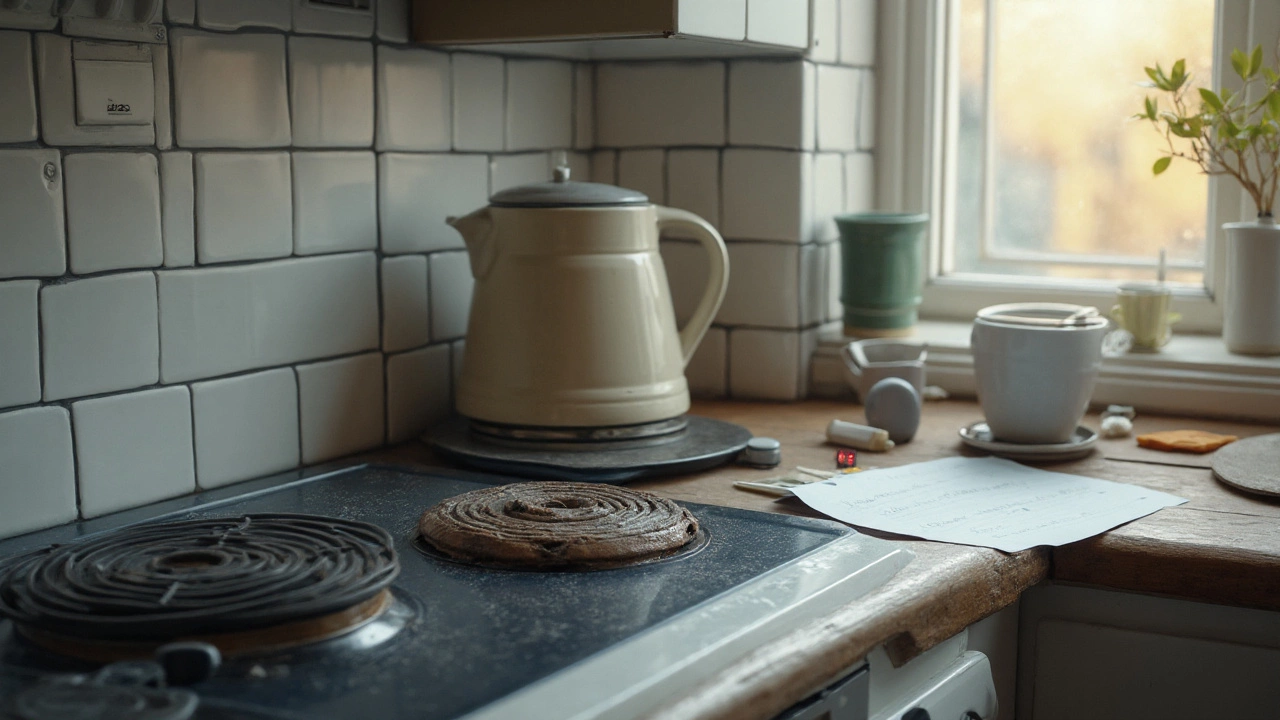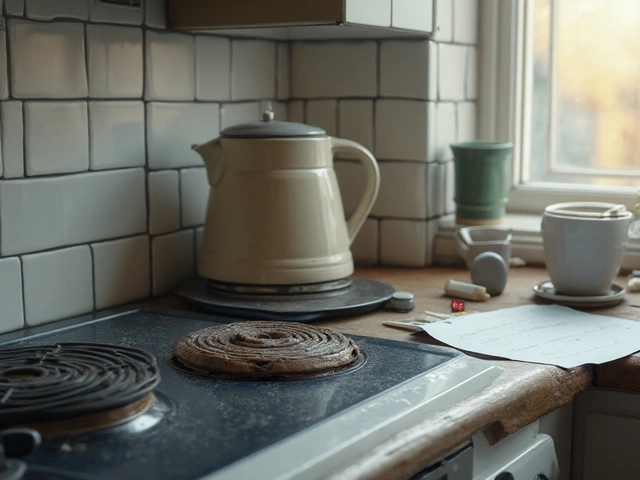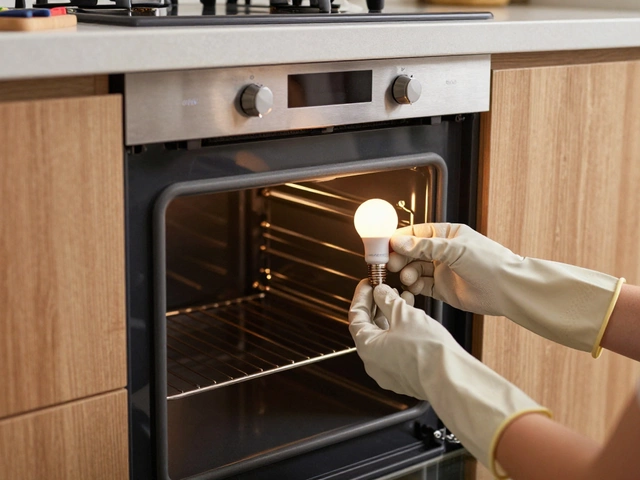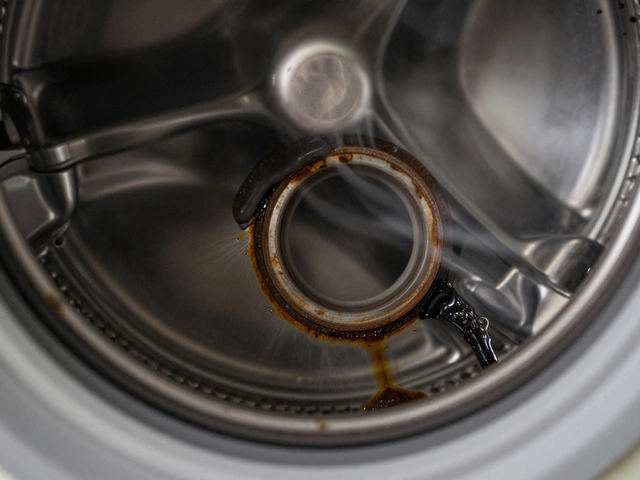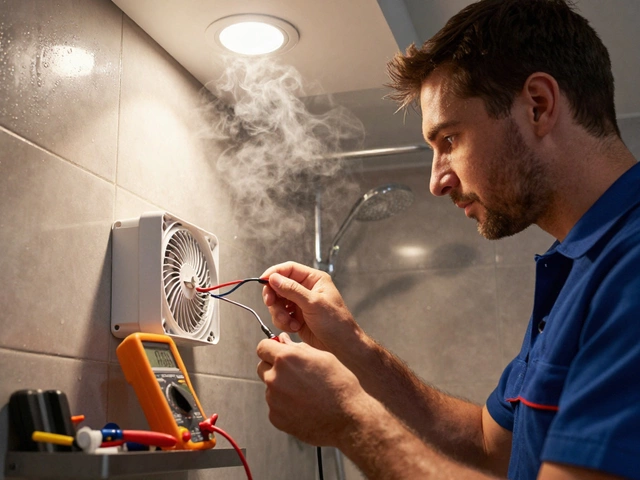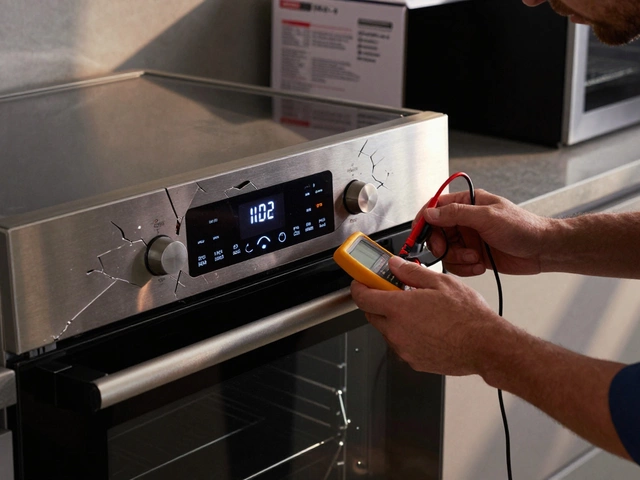You’re staring at a dead burner or an oven that won’t hold temp and wondering if a repair is just throwing good money after bad. Here’s the short promise: you’ll leave with a clear answer for your exact situation-age, fault, safety, and total cost in mind-so you don’t overspend or cook in frustration for weeks. I’ll share real NZ price ranges, what techs replace most, how long stoves actually last, and a quick decision path you can run in five minutes.
What you probably want to do next: estimate your repair bill, check if the fix is simple or fatal, weigh energy savings if you upgrade, avoid safety mistakes with 230-240V mains, and figure out if a claim under the Consumer Guarantees Act might save you hundreds. Let’s get you to a yes/no decision that feels solid.
TL;DR: When a Repair Makes Sense (and When It Doesn’t)
- Repair if it’s a simple, known part (element, switch, sensor, door seal), under 10 years old, and the quote lands under 50% of replacement. Typical electric stove repair cost for common faults: NZ$120-$350 parts + labour.
- Replace if the glass cooktop is cracked, the control board is fried and pricey, there are repeat faults, or the unit is 12-15+ years old. A new ceramic-top freestanding stove starts ~NZ$1,000-$2,000; induction ranges ~NZ$2,000-$4,000+.
- Energy angle: induction can cut 10-25% of cooking electricity versus old resistance elements. At ~35c/kWh, heavy home cooks might save NZ$40-$90 a year.
- Safety: kill power at the switchboard before touching anything. In NZ, work on fixed wiring must be done by a licensed electrician (EWRB). When in doubt, book a pro.
- Still under retailer or CGA coverage? Consumer NZ notes you may have rights beyond the standard warranty. If a mid-range stove fails “too early,” push the retailer.
Step-by-step: Diagnose the Fault and Decide with Confidence
This is the fast path I use at home in Wellington and with neighbours who message me when dinner plans go sideways.
- Kill the power and do safe basics
- Switch off at the wall isolator (if fitted) and the circuit breaker on your switchboard.
- Let hot parts cool. Remove pans and clean obvious spills that might be shorting a control.
- If you smell burning insulation or see scorch marks, stop. That’s a pro job.
- Identify the symptom
- Cooktop burner dead or stuck on high: Usually the element or the infinite switch/PCB channel.
- Oven won’t heat or heats unevenly: Often the bake/broil element or temperature sensor (thermistor). Sometimes the thermostat/control board.
- Tripping RCD or breaker: Shorted element, damaged wiring, moisture in controls-get a tech.
- Cracked glass top: Replacement glass is expensive; this often tips to replace.
- Door not sealing: A new gasket is cheap and effective.
- Check age and model quality
- Typical lifespans: Coil/solid-plate or ceramic radiant: 13-17 years. Induction: 10-15 years (electronics-heavy but efficient). Heavy use, moisture, and salty air can shorten that.
- Under 5 years? Try a warranty/CGA path first. The Consumer Guarantees Act (NZ) expects goods to last a “reasonable” time for price/quality. Many mid-range stoves are expected to last more than the basic 1-2 year warranty.
- Price the likely fix
- Call-out in NZ: usually NZ$90-$150. Labour: NZ$90-$130/hr. Ask for a ballpark for your fault by phone.
- Common part prices: cooktop element NZ$60-$150; oven bake element NZ$80-$160; temp sensor NZ$40-$90; door gasket NZ$50-$100; control board NZ$250-$600; glass top NZ$400-$800 (part only).
- Fit those to a simple rule: if total repair exceeds 50% of replacement, lean toward replacing-unless you need a stopgap or the unit is quite new.
- Consider energy and usability
- Induction is fast, cooler to the kitchen, and more efficient. EECA has long rated induction the top electric option. If you cook a lot, fuel savings plus time saved can justify a switch.
- Hate your current stove’s controls or hotspot issues? A repair won’t fix that. Upgrading might be worth it for daily sanity.
- Make the call with the 50%/10-year heuristic
- Repair when: cost < 50% of a similar new model, and the stove is under 10 years, and the fault is a single wear part.
- Replace when: cost ≥ 50%, age 12-15+ years, repeated faults, or damage to the glass top or main control board.
- Book the right pro
- Many stove repairs are appliance tech work; any fixed-wiring needs an EWRB-licensed electrician. WorkSafe NZ advises not to DIY mains wiring.
- Ask the tech: diagnostic fee, parts availability, warranty on parts/labour, and a “repair vs replace” opinion on your brand/model.
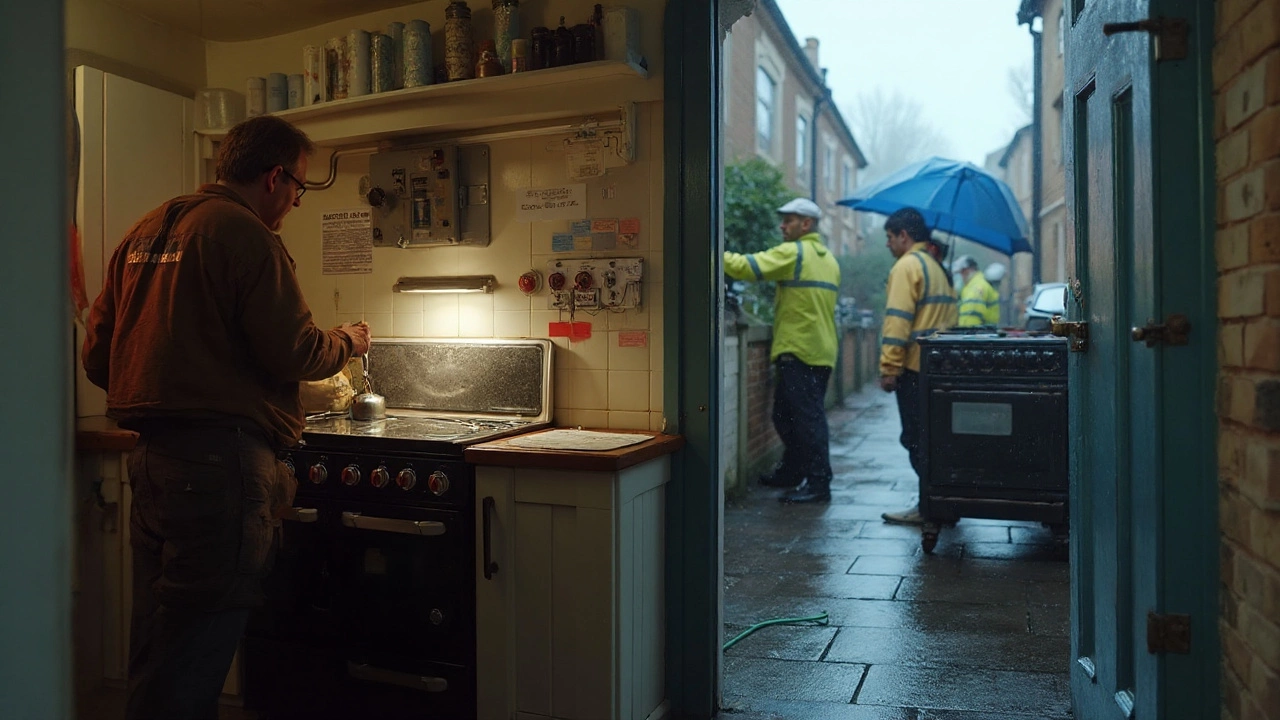
Costs, Examples, and What the Numbers Say in 2025
Numbers settle arguments, so here are the ones that matter in New Zealand right now. These are typical ranges I see in Wellington and what Consumer NZ and trade quotes line up with in 2025.
| Fault / Option | What it Means | Typical NZ Cost (parts + labour) | Downtime | Worth Repairing? |
|---|---|---|---|---|
| Single cooktop element dead | Worn element or switch | NZ$150-$300 | 1-3 days (part) + 45-90 min | Yes, if unit <10-12 years |
| Oven not heating | Bake element failed | NZ$180-$350 | 1-3 days + 1 hour | Usually yes |
| Wild oven temps | Temp sensor/thermostat | NZ$150-$300 | 1-3 days + 1 hour | Yes |
| Control board fault | PCB/relay failure | NZ$400-$800+ | 3-10 days + 1-2 hours | Maybe-check age and 50% rule |
| Cracked ceramic glass | Impact/thermal shock | NZ$600-$1,100 | 3-10 days + 1-2 hours | Often no-replace |
| Door doesn’t seal | Perished gasket | NZ$120-$220 | 1-3 days + 30-60 min | Yes |
| Wiring scorch or RCD trips | Short/moisture | NZ$180-$500+ | Depends on diagnosis | Yes if localised; replace if recurring |
| New ceramic-top freestanding | Like-for-like swap | NZ$1,000-$2,000 | Immediate if in stock | Good if repair ≥NZ$600 on old unit |
| New induction range | Upgrade to induction | NZ$2,000-$4,000+ | Immediate if in stock | Great if heavy cook and budget allows |
Example 1: Dead oven, 8 years old, family of five. Tech quotes NZ$280 for bake element fitted, available tomorrow. A new mid-range ceramic-top stove would be NZ$1,500. Repair is ~19% of replacement, age is fine. Fix it.
Example 2: Cracked glass top, 11 years old. Replacement glass quoted at NZ$750 + labour. New unit at NZ$1,600. Repair is ~50% of replacement and the stove is aging. Replace and enjoy fresh seals, new elements, and a reset clock that doesn’t blink 12:00.
Example 3: Control board fault on a 4-year-old model. PCB part at NZ$420, total job NZ$650. Under CGA, a 4-year-old mid-range stove is arguably too young for a major failure. Push the retailer for a remedy first; if refused, repair still makes sense versus replacing at NZ$1,800.
Energy savings in plain numbers: If you cook about an hour a day at an average 2 kW draw, that’s roughly 730 kWh/year. If induction saves 20% versus your old radiant top, that’s ~146 kWh saved. At 35c/kWh, you’re saving about NZ$51/year. If you cook more than most-say 2 hours/day-you could see NZ$100+ annual savings plus faster boil times and a cooler kitchen.
Parts availability note: Some brands keep spares for 7-10 years after production. If your model is obscure or old, part lead-times can stretch a week or two. Ask the tech before you commit so you’re not microwaving meals for a fortnight.
Checklists, FAQ, and Your Next Steps
Here’s where most people either save money or make a frustrating choice. Use these quick lists and answers before you book anything.
Repair if most of these are true:
- Unit is under 10 years old.
- Problem is a single, common part (element, switch, sensor, gasket).
- Total cost is under 50% of an equivalent new model.
- No scorch smell, cracked glass, or repeated failures.
- You’re happy with how it cooks and the controls.
Replace if any of these are true:
- Cracked glass cooktop or heavy corrosion inside.
- Control board quote is high and the unit is 10-12+ years old.
- Multiple burners or functions failing in short succession.
- Repair quote is ≥ 50% of replacement, or parts are not available.
- You want induction for speed and energy savings and can budget it.
Safety must-knows (NZ):
- Turn off power at the breaker before any inspection. 230-240V can kill. Don’t guess.
- Fixed wiring work is for licensed electricians (EWRB). Appliance techs handle most component swaps; they’ll bring in a sparky if needed.
- If an RCD trips after rain, heat, or a big spill, moisture may be inside-don’t keep resetting. Get it checked.
Money-savvy tips:
- Ask for a diagnostic-only fee first. If the fix is silly money, you’ve only spent the call-out.
- Get a written quote with parts/labour split and warranty. Many techs offer 3-12 months on parts and labour.
- Check retailer/CGA avenues for young appliances. Consumer NZ has great templates and guidance.
- If replacing, ask about haul-away and e-waste recycling for the old unit.
Simple maintenance that prevents repairs:
- Keep spillovers out of control knobs and touch panels. Wipe around seals after high-heat roasts.
- Don’t slam heavy pots on ceramic/induction tops. Avoid dragging gritty pans that can scratch and stress the glass.
- Replace door gaskets when they get shiny/flattened. Cheap, and it stabilises temps.
- If a burner cycles too hard, test with another pan; warped bases mess with sensors and can mimic faults.
Mini-FAQ
- Can I replace an oven element myself? Many elements are plug-in with screws, but you’re still around live-capable wiring. Power off at the breaker, take photos, and if anything looks off, call a tech. In NZ, keep within appliance repair boundaries and avoid fixed-wiring.
- Is a control board repairable? Sometimes a tech can replace a relay or reflow a joint, but most jobs swap the PCB. Part price and availability decide it.
- Does induction need special wiring? Most freestanding induction stoves use the same dedicated circuit rating as comparable electric ranges, but confirm amperage and breaker with an electrician.
- Do I need new pots for induction? If a magnet sticks to your pan’s base, you’re good. Some copper/aluminium-only pans won’t work without a ferrous layer.
- My oven shows temp but cooks cold-why? A failed bake element or temp sensor can do that. Diagnostic is quick; parts are common.
- How long should a good stove last? Expect 13-17 years for radiant ceramic/coil if looked after; 10-15 for induction, sometimes longer with gentle use.
Next steps by situation
- Homeowner, out-of-warranty, single fault: Book a diagnostic, cap spend at NZ$300-$400 unless the unit is young. Approve the fix if the quote is sensible.
- Homeowner, multiple issues on an older stove: Don’t stack repairs. Price a replacement; look at induction if you cook a lot.
- Renter: Log the fault with your landlord/property manager. Don’t DIY. If it’s unsafe or non-functional, it’s a timely repair obligation.
- Landlord: For a 10+ year old unit with two faults in 12 months, replace. Fewer call-outs, happier tenants.
- Budget tight, need cooking now: Approve a cheap element or sensor fix to buy 1-2 years while you save for an upgrade.
Quick decision tree you can run right now:
- Is the stove under 10 years and the fault a single common part? → Yes → Get a repair quote. If <50% of new, fix.
- Is the glass cracked or the control board expensive? → Yes → Replace.
- Are there repeat failures or scorch smells? → Yes → Replace or get a deep diagnostic before spending more.
- Do you cook a lot and want speed/efficiency? → Yes → Price induction and consider the annual savings + time.
A last word on rights and recycling: If your stove is only a few years old and has a major failure, talk to the retailer referencing the Consumer Guarantees Act-Consumer NZ has guidance on what’s “reasonable” life for the price paid. And when you do replace, book proper e-waste handling; many appliance retailers or local transfer stations can route old units to accredited recyclers.
Bottom line: small, clear faults on a younger electric stove are well worth fixing. Big hits to glass or boards on an older unit are not. Use the 50% rule, the 10-year nudge, and keep safety front and centre. You’ll know your answer now.

